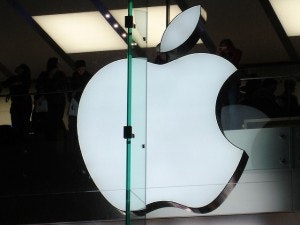It seems like Apple Inc. (NASDAQ:AAPL) can´t get a break from negative news lately, earnings data from Verizon Communications Inc. (NYSE:VZ) has been interpreted as one more reason to sell the stock, and Apple Inc. (NASDAQ:AAPL)finally closed below $400 per share on Thursday after the report.

The numbers
Verizon Communications Inc. (NYSE:VZ) sold 4 million iPhones in the last quarter, that´s a 25% increase versus the same quarter in the previous year, but a 33% fall from the December quarter. The December quarter includes the holidays, and it’s also the first full quarter in which the iPhone 5 was available, so a decrease from quarter to quarter was widely expected. The iPhone represented 55.5% of the smartphones activated by Verizon Communications Inc. (NYSE:VZ) in the first quarter of 2013, an increase versus a participation of 51% in the same quarter last year.
These numbers aren’t painting a dismal picture for Apple Inc. (NASDAQ:AAPL), on the contrary, the iPhone is showing healthy demand and even outgrowing the competition judging by Verizon Communications Inc. (NYSE:VZ) sales data. One particular data point looks worrisome though: only half of the activated iPhones were LTE, since the iPhone 5 is the only LTE model, this means that just half of the iPhones activated by Verizon Communications Inc. (NYSE:VZ) were iPhone 5.
This is below analyst´s expectations, and it shows that customers are increasingly finding the iPhone 4S and iPhone 4 more convenient options when it comes to the price and quality trade off versus the iPhone 5.
The meaning
Considering that Apple Inc. (NASDAQ:AAPL) was falling by more than 2.5% after the Verizon Communications Inc. (NYSE:VZ)report, investors seem to be focusing their attention on the negative part of the data, bigger participation of previous models in the sales mix. This factor means lower realized prices for Apple Inc. (NASDAQ:AAPL), but what it says about the products is probably more important.
To begin with, Verizon Communications Inc. (NYSE:VZ) benefits from this change in product mix since lower subsidies means a higher profit margin for the company. Carriers have been complaining about the subsidies issue for a long time, and pushing previous iPhone versions seems to be a smart strategy to get around this problem without renegotiating subsidies with Apple.
The fact remains, however, that even if carriers have part of the responsibility, many customers are finding it more attractive to save a few bucks and buy an older iPhone model as opposed to paying full price for an iPhone 5, and this has brought the attention back to the issue of quality and innovation at Apple.
The company has been facing heavy criticism regarding products like the iPhone 5 or the new iPad models since they are incrementally better than previous versions, but they don’t include any breakthrough or revolutionary innovations. According to some Apple bears, the company lost its ability to innovate and disrupt when it lost Steve Jobs.
Realistic expectations
Let´s face it, the iPhone 5 is better than previous models, but there is nothing revolutionary in it. When it comes to Apple fans, those who absolutely must have the latest product, those people don´t usually buy their smartphones from Verizon, they are more likely to make a line in front of an Apple store to get their hands on the product as soon as possible.
Other consumers just make a price and quality comparison, and many of them have rationally found that older models are a better deal for them. What´s wrong with that?
The iPod, the iPhone and the iPad were revolutionary products when they were first launched, after that, it was all about marginal improvements and incremental innovation with the new versions. The iPhone 5 is not different to other Apple products in that sense.
If you are expecting a revolutionary product from the company, look for a new iTV, a smart watch or some other new launch. New versions of existing products have never been revolutionary when it comes to Apple.
The iPhone has moved way beyond the early adopter phase, it`s not only for Apple fans now, it’s a product for the masses, and many consumers are choosing the cheaper version of the product.
Considering all the talk and rumors about the need for a cheaper iPhone, we should keep in mind that the iPhone 4 and 4S are in fact cheaper iPhones, and they are selling quite well. According to Tim Cook there was not enough supply of iPhone 4 to meet demand in the last quarter of 2012.
Bottom line
The numbers from Verizon show that the iPhone is doing better than fine in the U.S. Yes, older versions are gaining participation versus the iPhone 5, but that´s no reason for panic and no reasonable explanation for the sell off either.
There is just too much negativity surrounding Apple these days, and investors seem to find reasons to sell with every piece of news. This formerly high-flying stock has become a contrarian opportunity.
The article What Verizon’s Numbers Really Say About Apple originally appeared on Fool.com and is written by Andrés Cardenal .
Copyright © 1995 – 2013 The Motley Fool, LLC. All rights reserved. The Motley Fool has a disclosure policy.

